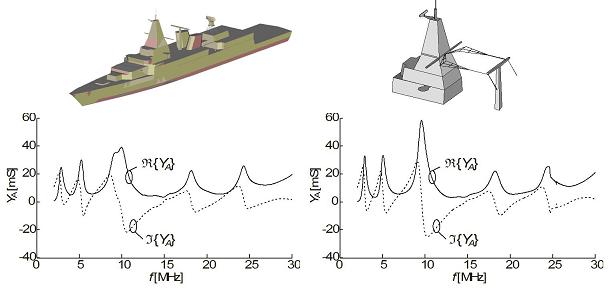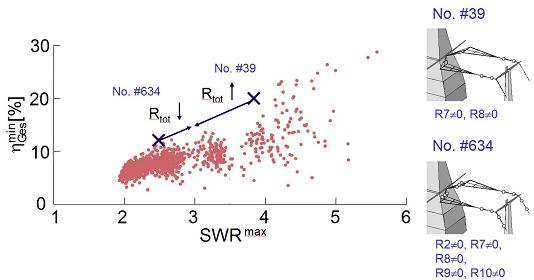Broadband HF shipboard antennas with distributed damping
Distributed damping is a desired feature for broadband shipboard HF fan wire antennas. Lumped resistors currently in use cause hazards due to the mechanical load of the antenna in heavy seas and due to their infrared signature. Optimization of the distributed damping by using 3D field solvers is extremely time consuming when considering the whole ship structure.
The fundamental characteristics of the impact of distributed damping on antenna performance are investigated systematically. It is proved that distributed damping is superior to lumped damping in terms of radiated power and matching. Furthermore, there exists an infinite number of optimized damping distributions which all provide similar result.

(a) with whole ship model
(b) with simplified superstructure on a conducting ground plane
In a next step, the basic impact of the ship structure on the input impedance of the HF-fan-wire antenna is studied for a generic ship model. A simplified model (Fig 1.) is extracted which reflects the main resonances caused by the ship structure. This model is used for an optimization of the damping distribution of the fan-wire antenna via a combinatorial approach. Compared to a reference antenna with a single 240 Ω resistor for each fan the minimum overall efficiency – including return loss – of the system could be increased with an optimized distributed damping structure by more than 50{3728c0ddcf5026c65bc0b4e995c837d09025c3e7fa253cea254631dfe46bf841}.

A maximum total efficiency is desired for a given SWR of 3.
Am Forschungsvorhaben Beteiligte:
Letzte Änderung: 27. September 2017